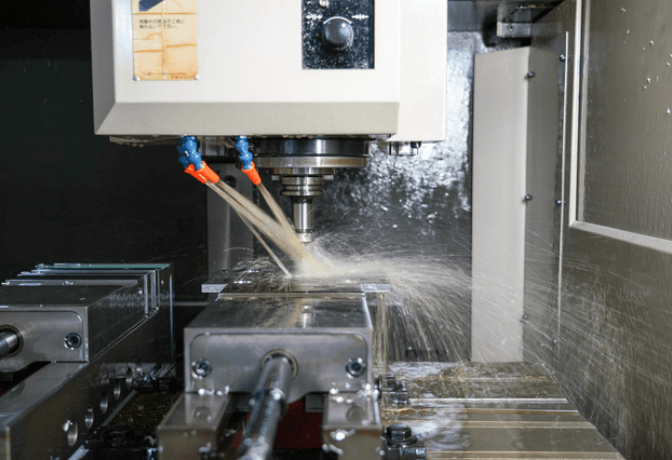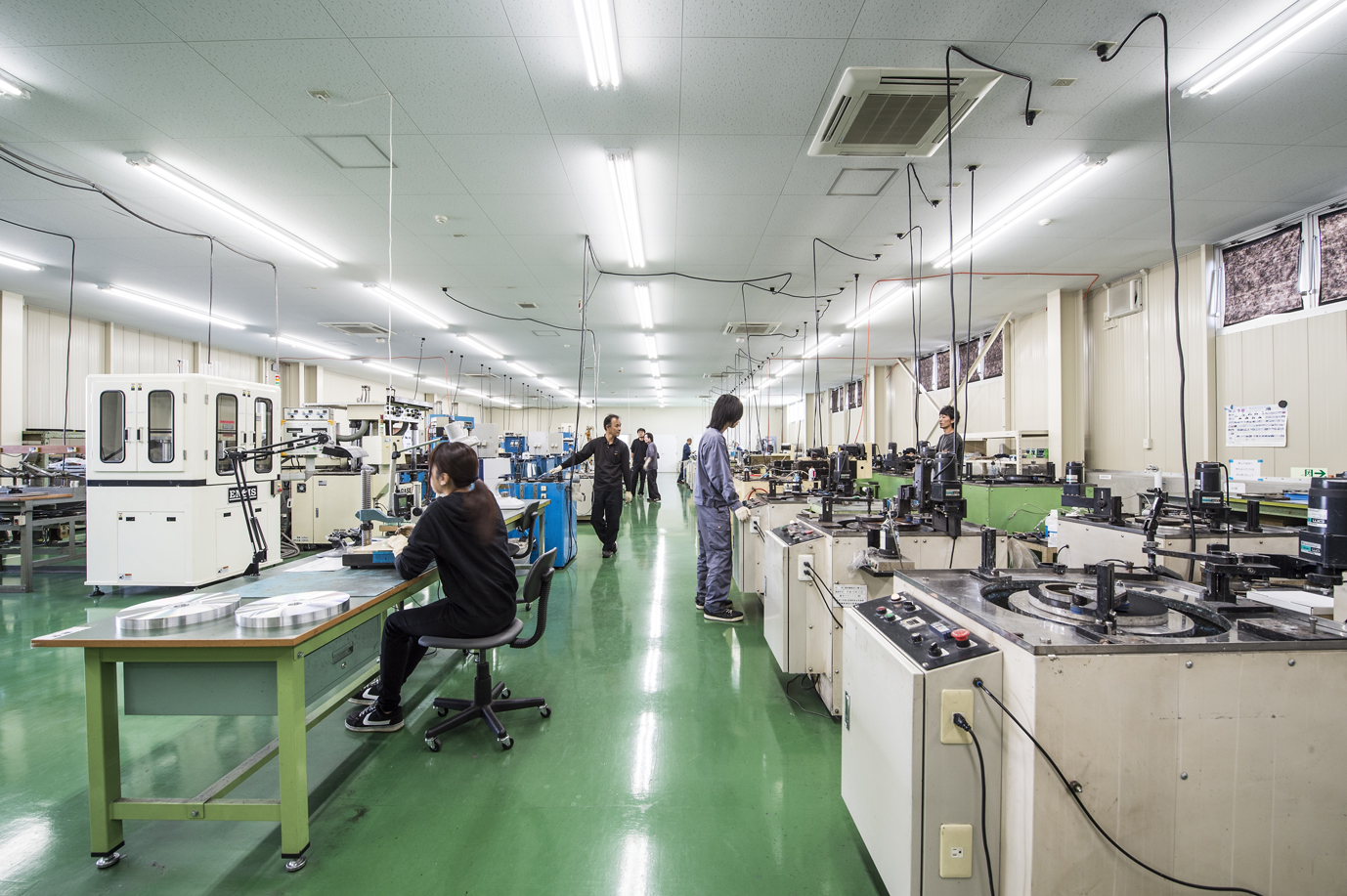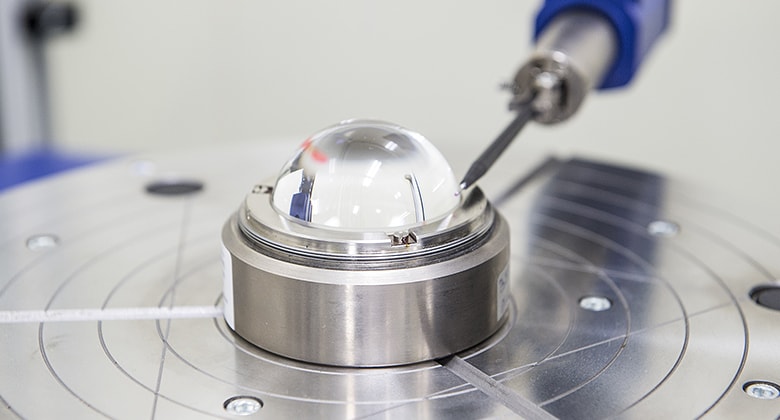
About Lapping and Polishing
Basic knowledge about lapping and polishing, also TDC’s lapping polishing processing examples.
Contents
What is Lapping?
Lapping is a processing method in which a product is placed on a flat disk-shaped table called a lapping machine.
Abrasive will be poured on the product, and pressure will apply from above and below to polish the product.
We have both wet and dry lapping excipents, and which to use depending on the required accuracy and finish.
General processing applications are wafers, which are materials for manufacturing semiconductor devices, lenses for cameras and microscopes.
We also often lap items that are often used for parts and processed products whose surface needs to be polished.
Examples of TDC’s lapping process
Micron Cube

We have created very small cubes with lengths of 50 μm, 100 μm, and 150 μm on each side that are barely visible.
By lapping each surface patiently this tiny microcubes are made.
Experiments were conducted to investigate the effects of contamination and this item was used instead of several sizes of dust and dirt on a device.
The edges are very sharp, and this item is one of the products that covers TDC technology.
Problems such as burrs, chips, and sagging can occur when this tiny items is made by general cutting / grinding / polishing, but with TDC technology sharp edges without burrs, chips, and sagging can be made.
Also dimensional tolerance is less than +/- 1 μm , and smooth surfaces are realized at the same time by TDC’s technology.
The cube is so small that we paid close attention to the packaging so that it wouldn’t fly away and be lost when opened.
Middle convex finish
By adjusting the surface plate of our lapping machine, we can make flat surfaces, convex surfaces, concave surfaces, etc.
In addition to this machine, TDC checks the accuracy during processing many times to achieve the desired specifications with good reproducibility at a low price.
Large size processing of materials that are difficult to process (such as molybdenum)
Molybdenum is one of the materials that are difficult to put in precision because of it’s hardness and distorted.
This request was also under the condition that the plate was large and very thin.
In response to requests from foreign customers who had trouble with applications where flatness is extremely important, we tried many times by changing the process and method and received high praise for the finish.
Regardless of the material and shape, we can handle precision processing for all kinds of polishing, such as the small items to large size up to 800 mm.
Please feel free to contact us for more information.
with nano-level precision polishing.
and production from single units to mass production.
How lapping works
Unlike fixed-abrasive polishing which uses a whetstone, lapping is a free-abrasive method that uses a suspension consisting of abrasive grains and a liquid called a lapping agent.
Different from “Fixed abrasive grain polishing”, lapping is a free-abrasive method that uses a suspension of abrasive grains and liquid.
Since there is no binder to connect the abrasive grains, they directly grind the surface of the product, so it can be polished uniformly and stably.
Lapping it is widely used in the semiconductor and optical fields where ultra-precision processing is required for this reason.
However, while it has the advantage of being able to produce high quality in a stable manner, it has the disadvantage of taking too much processing time when the requirements are reducing a large amount of thickness or changing the shape.
What is Lapping agent?
Abrasives mixed with a small amount of lubricating oil are called “lapping agents.” Various materials are used for lapping agents depending on the application.
Material of lapping agent
- Alumina: Abrasive grains with stable hardness and heat resistance. Mainly used for steel processing.
- Silicon carbide: Abrasive grains used for processing non-ferrous metals such as aluminum alloys and copper alloys.
- Diamond slurry: Abrasive grains using artificial diamonds. It is used for processing cemented carbide and ceramics.
“Wet Lapping” and “dry Lapping”
Lapping can be broadly divided into two types: wet lapping and dry lapping.
Each method requires a different amount of working fluid to be mixed with the lapping agent, and is used according to the purpose of finishing.
wet lapping
A working fluid (lubricating oil such as petroleum or machine oil) is added to the lapping agent, and lapping is performed at low pressure.
Due to the large amount of processing, it is often selected for rough finishing and intermediate finishing processes, and the surface is matte finish.
dry lapping
The lapping agent is rubbed into the small unevenness of the lapping machine, and lapping is performed at high pressure.
Because the amount of processing is small, it is often selected for a more precise finishing process, and the surface has a glossy mirror finish.
What is a lap board
A lapping machine is an NC machine tool used for lapping.
The lapping machine and the object to be processed are rotated, and the surface is polished smoothly by scraping while applying pressure.
There are types such as “single-sided” and “double-sided”, and double-sided lapping machines have high work efficiency and are ideal for mass production of processed products.
Single-sided lapping machine
By using one lapping machine, only one side is lapped.
Double-sided lapping machine
Used two lap both sides.
Advantages of Lapping process
The advantage of lapping is that it is grinds with a very small force using tiny abrasive. Therefore, it is possible to achieve the desired accuracy without giving any stress to the product.
It also matches those that require a smooth surface. Lapping is one of the processing methods that does not cause distortion due to processing heat.
Creating a smooth surface can also be effective from the viewpoints of achieving high-precision assembly as a part, improving optical characteristics, managing friction characteristics, and preventing rust.
Disadvantages of Lapping process
The advantage of lapping is that it is grinds with a very small force using tiny abrasive.
Therefore it is possible to achieve the desired accuracy without giving any stress to the product.
It also matches those that require a smooth surface. Lapping is one of the processing methods that does not cause distortion due to processing heat.
Creating a smooth surface can also be effective from the viewpoints of achieving high-precision assembly as a part, improving optical characteristics, managing friction characteristics, and preventing rust.
What is the difference between Polishing?
The difference between lapping and polishing lies in the finishing process.
Lapping is a method of efficiently processing into the desired shape and quality by using hard tools and abrasive grains that are 0ver 10 um.
Polishing refers to using small abrasive grains that are less than 10 um and a soft tool (polisher) such as felt or plastic to smooth the rough surface after grinding.
Usually the very last mirror surface finish process is called polishing.
Contact TDC about polishing any time!
Lapping and polishing has the advantage of being able to polish evenly, but also the disadvantage of taking time due to process little by little.
In addition, it is very important to be familiar with these characteristics in order to finish the product carefully.
TDC can achieve high accuracy by selecting the processing method and abrasive material according to the content.
In addition to being able to deliver according to your desired delivery date, we can also offer it at a low price.
We have accumulated unique technological development and know-how in processing, and can handle any shapes. Please feel free to contact us for any inquiries regarding processing or concerns.
with nano-level precision polishing.
and production from single units to mass production.
Related page
- Precision lapping service / ultra precision lapping service
- Polishing service
- What is Grinding
- What is cutting
- What is a chuck table? | Basic information and description of types, Processing accuracy at TDC
- Copper polishing
- Polishing after thermal spraying
- Sapphire polishing
- Polishing of plastic/acrylic resin
- Polishing after surface treatment/coating
- Symbol used for polishing
- Polishing of SiC
- Polishing of titanium
- Cylindrical grinding/cylindrical polishing
- Type of polishing process
- What is the accuracy that can be achieved by polishing?
- Principle of polishing process
- Polishing process for Resin
- Metal polishing process
- What is CMP
- What is polishing?
- About Lapping and Polishing









